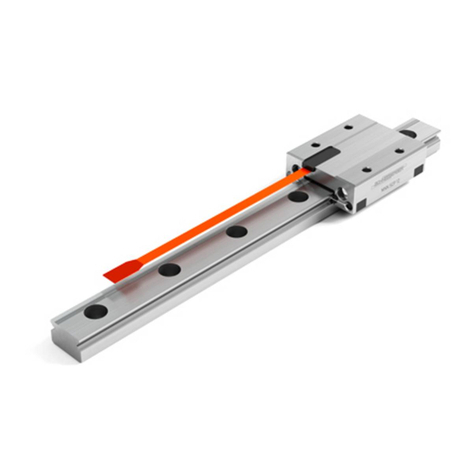
5
Safety Instructions
These instructions describe installation of micro frictionless tables with integrated
measuring system MINISLIDE MSQscale.
Supplementary Literature: MINISLIDE MSQscale product catalog
MINI-X product catalog
MINILIDE MSQscale must only be assembled by appropriately trained specialists
who have read and understood these instructions.
MINILIDE MSQscale can only be exposed to the approved environmental influences
(see product catalog).
• Lubricants should be disposed of in an environmentally responsible way.
• Decommissioned components should be disposed of in accordance with local/
national laws and guidelines.
MINILIDE MSQscale are high-precision components and should be handled with care. For
transportation of these products in-house, the following points should therefore be noted:
• Transport guideways and accessories in their original packaging
• Protect guideways against impacts
•
Before working on electrical equipment, switch off or disconnect the power
supply and ensure that it cannot be switched on or connected again unintention-
ally.
•
Country-specific regulations, standards and guidelines for accident prevention
must be observed.
• The MINISLIDE MSQscale is sensitive to electrostatic discharge! The electronics
can be damaged if precautions are not taken against ESD; ESD regulations
should therefore be observed when handling ESD-vulnerable parts (EN 100015-1).
•
Do not store the products outdoors, and protect them against moisture
(10% - 70% relative humidity, non-condensing).
• Observe the specified temperature range (-40 °C to +80 °C)
• Only remove the products from their original packaging at their installation loca-
tion and immediately prior to installation.
• The products are lubricated in the factory. Check the condition of the lubricant
(the service life of the lubricant is limited).
Improper handling of the guideways can lead to pre-damage and thus to premature
failure.
1 Safety Instructions
1.1 ScopeofApplication
1.2 AuthorizedStaff
1.3 Intended Use
1.4 GeneralSafetyandProtectiveMeasures
1.5 EnvironmentalProtection
1.6 Transport




























